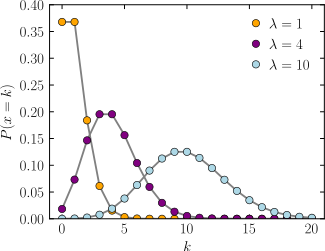At equilibrium the virus and antibody can be viewed as sharing the same transmission bandwidth, they they will both be independent arrivals, but will look like gaussian arrivals toi a Poisson queue.
Virus are vastly outumbered, their queue size is one fortieth of the anti-body, consider the green line vs the yellow.
This is a queueing process, the antibodies cover almost all the large queue possibilities for the virus. Almost all virus evens are single neighborhood and extinguished quickly. Any multi-neighborhood combinations the virus might try, they are are outnumbered.
So, the virus mostly has one or two groups in battle, the antibodies almost always more than needed to extinguish. If the distributions were symmetrical, the immune neighborhoods would have a hard time. The antibody may be overrun about ..35 * .005 where I am taking a stab at the probability for antibody. And of that group, some 2% die.
The seasonal f;u is explained this way. After a long time immunity fades and we eventually see the low probability event where virus neighborhoods can over run the neighbor. That is an outbreak, a non adiabatic transition. If we insist all transitions are adiabatic then we limit the smaller queue, the virus, to zero or one, in the queue. That is like imposing the Pauli exclusion principle.

No comments:
Post a Comment